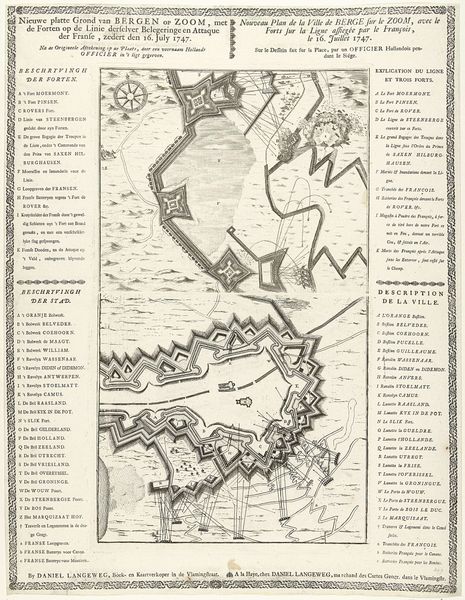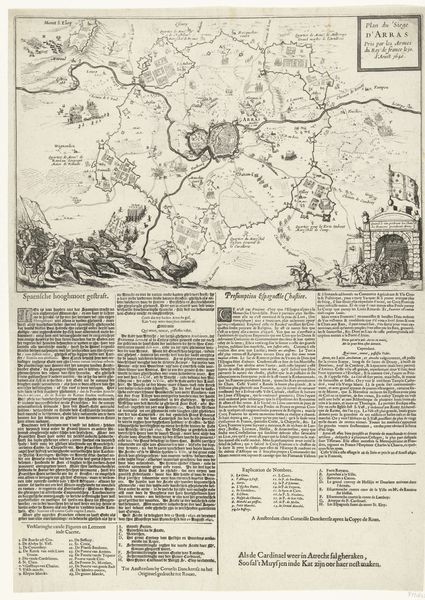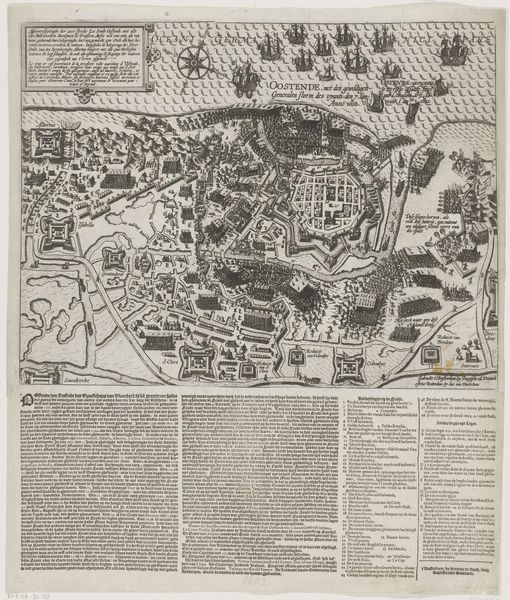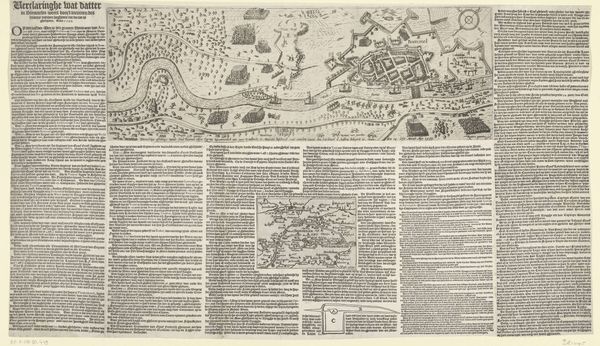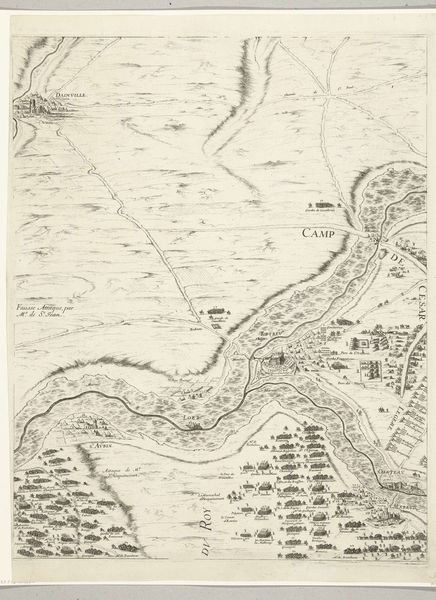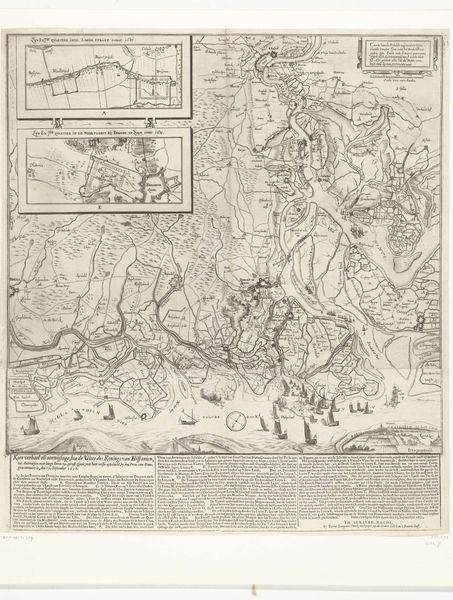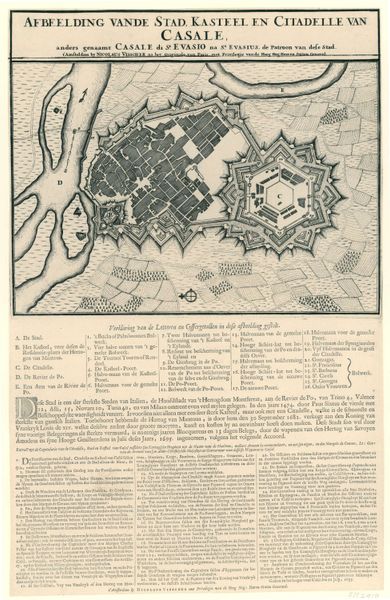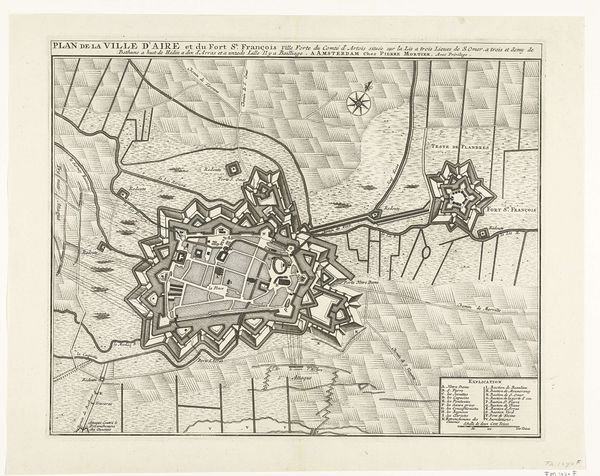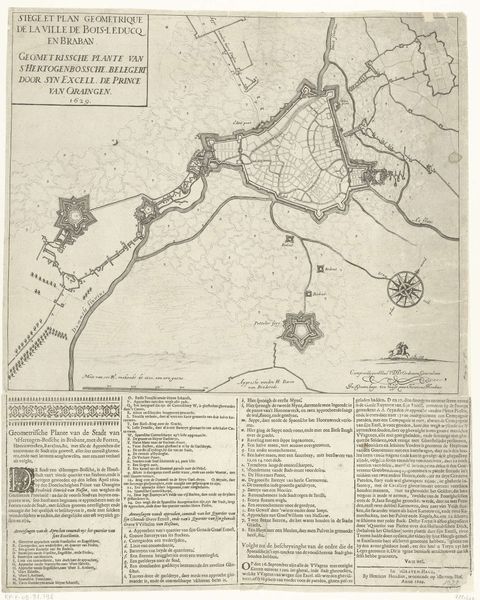
print, engraving
#
baroque
# print
#
old engraving style
#
cityscape
#
history-painting
#
engraving
Dimensions: height 524 mm, width 422 mm
Copyright: Rijks Museum: Open Domain
Editor: This is a print from 1747 entitled "Plattegrond van het beleg van Bergen op Zoom, 1747," by an anonymous artist. It depicts a cityscape under siege. It feels very precise and detailed, but also a little removed from the actual lived experience of such an event. What do you see in this piece? Curator: I see a potent visual statement about power, conflict, and the shaping of urban space. These siege maps, particularly from the Baroque era, need to be read not just as cartographic documents but also as ideological constructs. Consider how the meticulous detail masks the chaos and violence of warfare. Whose perspective is centered here, and what does that tell us about the intended audience and the purpose of this image? Editor: So, it’s not just about accurately showing what happened, but about something more? Curator: Exactly. The map idealizes and attempts to control the narrative around a highly disruptive event. The neat lines of the fortifications, the structured key, even the detached aerial perspective—it all contributes to a sense of order imposed upon the disorder of war. We must consider whose interests are served by this representation. How does it contribute to national identity or political propaganda? Are there marginalized voices erased by this supposedly objective viewpoint? Editor: That’s a really interesting point. I hadn't thought about it in terms of power dynamics and whose story is being told, and who is left out. Curator: And notice the language used in the title, both in Dutch and French. The siege is framed as something "undertaken by the French." How does this influence our understanding of the conflict and the people involved? Editor: Now that you mention that, it is making me question a lot about how history is presented and how important it is to look at things critically! Curator: Precisely. By interrogating these seemingly straightforward representations, we can uncover deeper insights into the historical context and its continued resonance today.
Comments
No comments
Be the first to comment and join the conversation on the ultimate creative platform.
